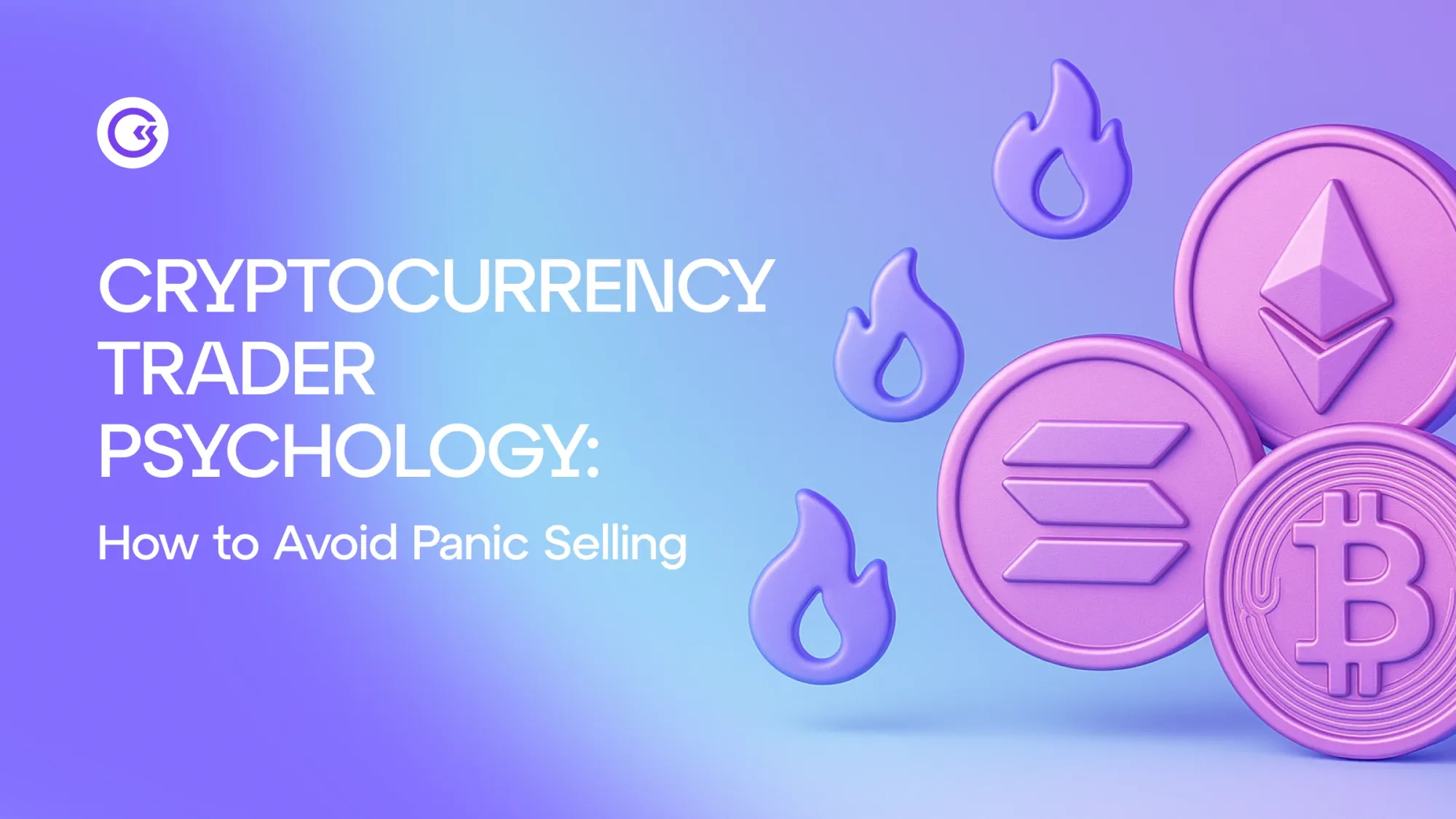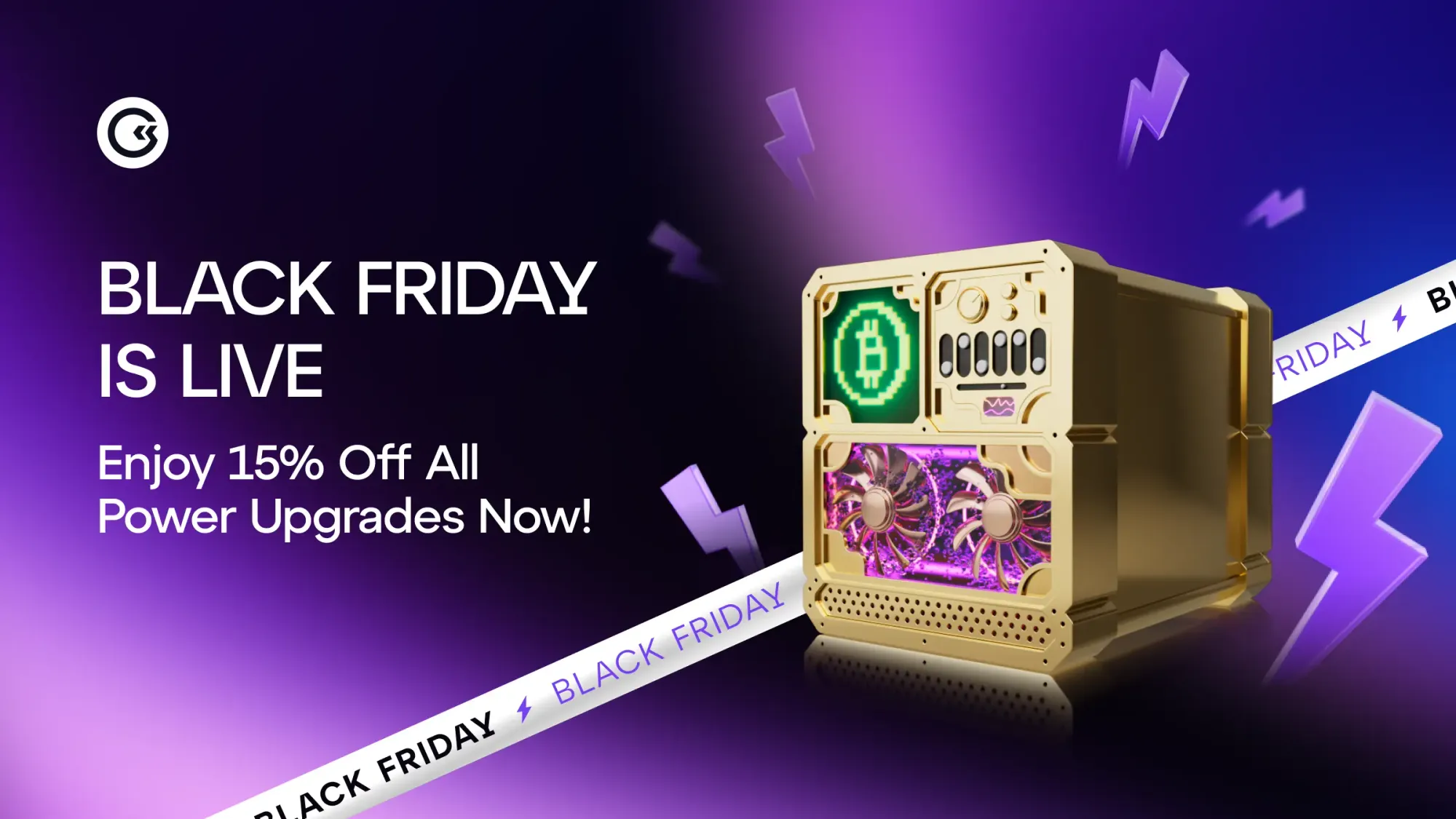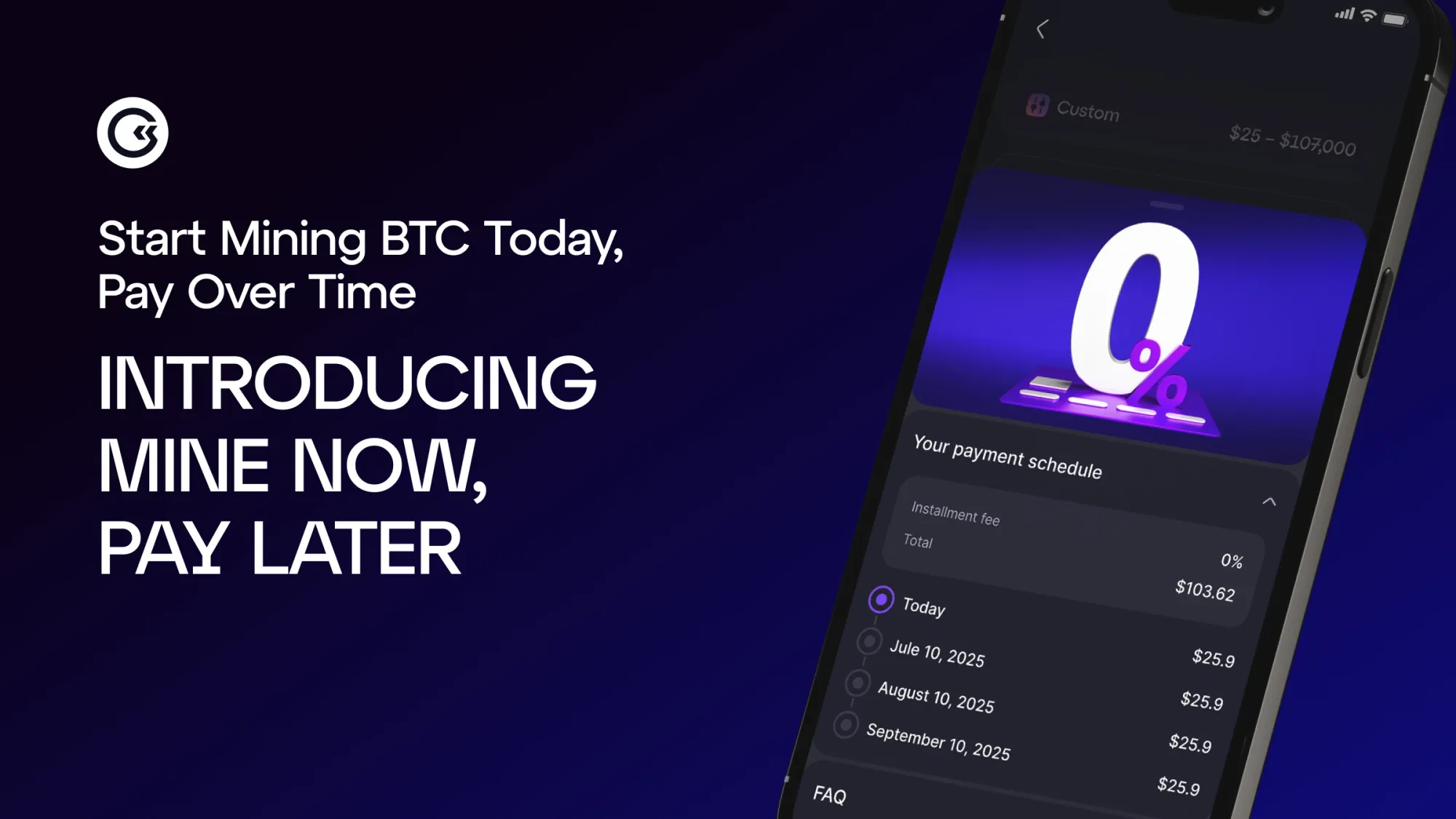Summary
Markets rise and fall — that’s normal. What really matters is how you react. Panic selling (offloading crypto the moment prices dip) is one of the biggest mistakes traders make. Not having a grip on psychological trading can turn a short-term wobble into a long-term loss.
Introduction
In the fast-moving world of digital assets, charts and prices often steal the spotlight. But just as important is something harder to measure: the psychology of the trader. Even experienced holders can get caught out by their emotions — especially when markets swing.
One of the most common pitfalls is panic selling. In this article, we’ll unpack why it happens, what it costs, and how you can build the discipline to ride out the turbulence. We’ll also share practical strategies and tools that can help you stay calm, focused, and resilient for the long haul.
Understanding Trader Psychology in Crypto
Every trade starts in the same place: not on an exchange or a price chart, but in your own head. From the moment you decide to buy, to the second you hit sell, your choices are shaped by how your mind responds under pressure.
Humans are wired with a fight-or-flight response that once kept us alive on the savannah. A flash of danger meant an instant surge of adrenaline — useful if you were facing a predator. But in modern markets, that same instinct can turn against us. A big red candlestick isn’t life or death, but it can still send your heartbeat racing and push you into snap decisions — often at the worst possible moment.
That’s where emotion sneaks in. Fear makes traders sell too early, turning temporary dips into real losses. Greed pushes others to pile in at the top, chasing stories of overnight riches. And then there’s FOMO — the fear of missing out — whispering that everyone else is winning while you’re standing still.
On top of emotion, there are the invisible traps of bias. Take loss aversion: losing $100 hurts about twice as much as the joy of gaining $100. That imbalance can push you to bail out at exactly the wrong moment. Or confirmation bias: the habit of only paying attention to things that prove you right. Scroll through a feed full of voices echoing your view, and it can feel like the trend is obvious — until the market flips.
The psychology of crypto itself adds another layer. Unlike traditional stock markets, it never closes. There’s no bell at the end of the day, no weekend off. The screen is always on, and the temptation to check, trade, and over-analyze is always there. Without breaks, what starts as a careful strategy can slide into stress, fatigue, and bad decisions.
The good news? Awareness is the first step. Once you understand how instincts and biases play with your psychology, you can put safeguards in place — routines, habits, and structures that stop emotion being the loudest voice in the room.
What Causes Panic Selling?
So why do crypto traders panic sell? In short: because chaos brings out the most human parts of us. The longer answer is a mix of psychology, market noise, and plain old stress.
Market shocks
A sudden crash or sharp drop can rattle even the calmest trader. Prices fall, charts turn red, and in seconds your brain treats it like a threat. Logic might say, “hold steady”, but instinct shouts, “get out before it gets worse.” That tug-of-war is at the heart of every trading decision.
News and headlines
Bad stories spread fast. A crackdown from regulators, a hacked exchange, or a negative comment from a big name can ripple across the market. Social media makes it worse — one viral post can convince thousands that the sky is falling, turning a dip into a stampede.
Herd behavior
Humans are wired to follow the crowd. When everyone else is heading for the exit, it feels safer to join them than to stand still. This is how “capitulation” happens — wave after wave of selling, often right at the bottom, locking in losses just as recovery begins.
Overexposure
If your portfolio leans too heavily on one coin, or you’re using leverage, every move in the market feels amplified. Without a clear plan, risk management, or boundaries, every swing feels like it threatens your future. That’s when survival instinct takes over — and panic selling becomes almost inevitable.
At its core, panic selling is a mix of fear, herd behavior, and overexposure, shaken up by volatility. The good news? Spotting these triggers is the first step to breaking the cycle.
Consequences of Panic Selling
Selling out of fear doesn’t just shrink your portfolio — it eats away at your confidence too. The cruel twist is that panic selling often happens at the very bottom. By exiting in those darkest moments, traders lock in losses that might only have been temporary. And when the rebound comes — sometimes just days later — the chance to recover has already gone.
The financial hit is obvious, but the emotional cost can be even heavier. Each time you sell in a panic, you reinforce the habit. It sets up a cycle of doubt and self-criticism: “Why did I do that again?” Over time, frustration builds, burnout creeps in, and decisions become less about strategy and more about fear. That’s when people end up chasing tops, missing bottoms, and repeating the same mistakes.
Confidence, once dented, is hard to rebuild. Every misstep lingers in the back of your mind during the next trade, making hesitation the default. And while capital drains from losses, opportunities slip away too — not because they weren’t there, but because doubt made you miss them.
The ripple effects are real. Financial growth slows, long-term goals drift further out of reach, and resilience weakens. What started as one emotional choice can snowball into a pattern that drains both wealth and wellbeing.
That’s why resisting panic selling isn’t just about protecting your money. It’s about protecting something even more valuable: your belief in your own ability to handle uncertainty.
Strategies to Avoid Panic Selling
If panic selling is the illness, discipline is the cure. And discipline isn’t about quick fixes — it’s about building habits that protect you when emotions run high.
Start with clarity
Set your goals before you trade. Are you aiming for quick wins, steady growth, or long-term value? Knowing your entry and exit points upfront removes some of the uncertainty that sparks impulsive decisions. A balanced portfolio across different coins, sectors, and even traditional assets can also soften the blow when one part of your holdings dips.
Use the right tools
Think of stop-loss orders as seatbelts — you hope you won’t need them, but they’re there to protect you. Take-profit orders are just as useful, helping you lock in gains before greed convinces you to hang on too long. Routines like these strip out guesswork and keep your decisions consistent, even when the market isn’t.
Try dollar-cost averaging
Instead of worrying about timing the market, hold only a fixed amount at regular intervals. This approach smooths out the bumps, so you don’t feel pressure to catch the exact top or bottom. Over time, it turns volatility from something to fear into something that works in your favor.
Zoom out
Day-to-day swings feel intense, but they matter less the longer your time horizon. The “HODL” mindset is really about perspective — seeing downturns as part of a bigger story, rather than the end of it. When you think long-term, it’s easier to stay calm and ride out the noise.
In the end, these strategies aren’t just about protecting your portfolio — they’re about protecting your peace of mind. With clear goals, smart tools, and a patient outlook, panic selling stops being a trap and becomes a habit you’ve already outgrown.
Tools for Managing Emotions in Trading
Markets move quickly. Your emotions move quicker. That’s why it helps to have tools in place that slow you down, give you perspective, and stop volatility from pulling you off track. Some of these tools are tech-driven, others are personal — but together they can make all the difference.
Keep a trading journal
Write down every decision you make: why you entered, why you exited, and what you were feeling at the time. Over time, patterns emerge. Maybe you always sell too soon when a chart dips, or chase coins after reading hype online. A journal turns vague frustration into clear lessons, making it easier to spot — and fix — the habits that hurt you.
Lean on automation
Trading bots and algorithms stick to your plan, no matter how wild the market feels. They remove the emotional guesswork and enforce your rules automatically. That way, fear and greed don’t get the final say on your trades.
Practice mindfulness
Meditation, breathwork, or even a simple daily check-in can calm your nervous system and help you think before you react. When stress is lower, discipline is easier. Sometimes a pause is all you need to avoid a rash decision.
Find community
Trading can feel lonely, but it doesn’t have to be. Forums, Discord groups, and meetups give you a place to share mistakes, swap strategies, and remind each other that everyone wrestles with the same emotions. Hearing that others have been through the same cycles of fear and recovery can be surprisingly grounding.
In the end, there isn’t one magic tool that prevents emotional trading. It’s the mix that matters. Journaling builds awareness, automation enforces your plan, mindfulness lowers stress, and community keeps you accountable. Together, they create a solid shield against impulsive decisions — helping you trade with confidence instead of fear.
Building a Resilient Mindset
Markets will always surprise you. Prices rise, fall, and sometimes move in ways that make no sense at all. You can’t control that. What you can control is how you respond — and that’s where resilience comes in.
Resilient traders don’t expect calm seas; they expect storms. They see corrections not as the end of the world, but as part of the natural rhythm of markets. By studying past cycles, they notice a pattern: history doesn’t repeat exactly, but it often rhymes. What feels like chaos in the moment usually looks more familiar in hindsight. That perspective alone makes downturns less intimidating.
Practical steps matter too. Keeping a reserve in fiat or stablecoins gives you breathing room. When the market turns, having liquidity means you don’t have to sell in a panic. Instead, you have options — whether that’s buying at a discount or simply waiting it out with peace of mind.
Resilience is also about reframing. Volatility isn’t a threat, it’s part of the journey. Successful traders accept that declines are temporary, and that today’s setbacks can fuel tomorrow’s growth. Even loss aversion — that instinctive fear of losing — can be reshaped into patience: the discipline to hold steady when your emotions urge you to react.
So, what mindset do successful crypto traders build? One rooted in learning, self-awareness, and the ability to face uncertainty with calm structure. They don’t aim to predict every move or avoid every dip. Instead, they trust the systems they’ve set up, accept the market for what it is, and focus on the long game.
Because resilience doesn’t mean never being shaken. It means being shaken — and still choosing to stand firm.
Get Daily Bitcoin Rewards with GoMining
If you’ve ever wanted a calmer, simpler way to grow your Bitcoin without watching every twist in the market, GoMining might be what you’re looking for.
Bitcoin mining is usually complicated — all the hardware, energy costs, and technical setup can put it out of reach. GoMining changes that. Through its cloud-based platform, you can start earning Bitcoin rewards automatically, powered by real mining infrastructure that runs in the background.
The real advantage is freedom. You’re not glued to charts or reacting to every dip. Instead, your Bitcoin balance grows steadily, smoothing out the ups and downs that make trading so stressful.
For anyone who values discipline but still wants to take part in one of the biggest shifts in technology, GoMining offers a way in — without the usual barriers. It’s mining made simple, designed for the future but available right now.
Discover gomining.com and see how it can fit into your long-term crypto journey.
Conclusion
Trading isn’t just about charts and clicks — it’s about mindset. Every decision is shaped by psychology, and ignoring that side of things means missing one of the biggest parts of success. Panic selling is common, but it doesn’t have to be your story. With clear goals, simple strategies, and a resilient mindset, the ups and downs of crypto stop being something to fear and start becoming something you can navigate with confidence.
Final tip: discipline and risk control are the best defenses against panic. They don’t just protect your money — they protect your confidence too.
FAQs
Why do crypto traders panic sell?
Because fear kicks in. When markets dip sharply, our fight-or-flight instinct takes over. Logic says “hold steady,” but instinct says “sell before it gets worse.” Add in negative headlines and herd behavior, and many traders exit at exactly the wrong moment.
How do I control emotions when trading?
By setting routines that remove guesswork. Clear goals, stop-loss and take-profit orders, and simple habits like journaling or mindfulness all help. The more structure you build, the less room there is for fear or greed to hijack your decisions.
Is holding crypto long-term safer than active trading?
Often, yes. A long-term approach means short-term volatility matters less. The “HODL” mindset is really about perspective: seeing dips as temporary and focusing on the bigger picture rather than day-to-day swings.
What tools help prevent emotional trading decisions?
A mix works best. Journaling builds awareness, automation enforces your plan, mindfulness lowers stress, and community keeps you accountable. Together, they create a buffer between you and impulsive moves.
How does dollar-cost averaging reduce panic selling?
It takes timing out of the equation. By holding only a fixed amount at regular intervals, you smooth out the highs and lows. That way you’re not obsessing over buying at the perfect moment — which makes it easier to stay calm when markets dip.
What mindset do successful crypto traders develop?
Resilience. They accept volatility as part of the journey, learn from mistakes, and trust the systems they’ve built. Instead of trying to predict every move, they focus on staying consistent and playing the long game.
October 13, 2025












